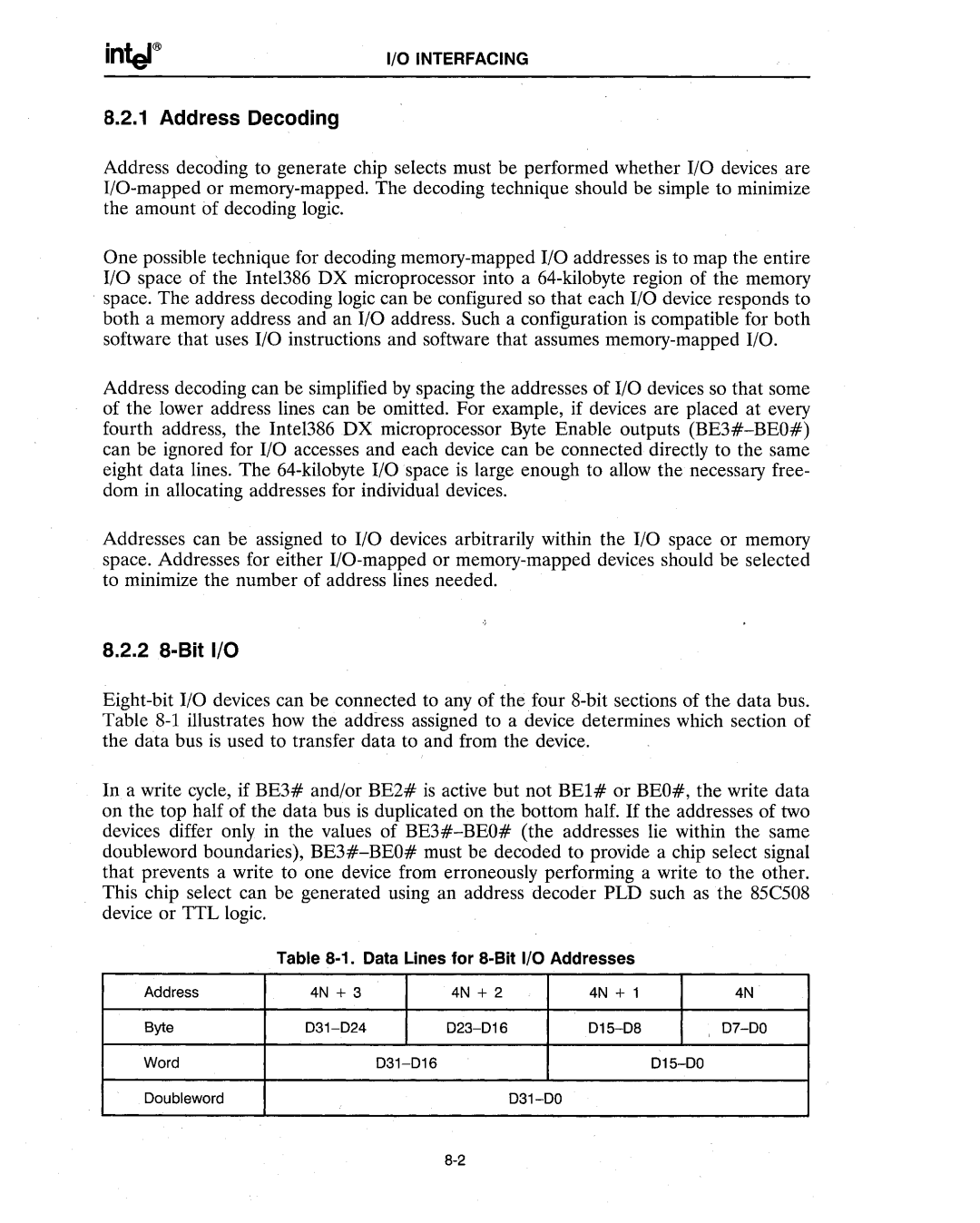I/O INTERFACING
8.2.1 Address Decoding
Address decoding to generate chip selects must be performed whether I/O devices are I/O-mapped or memory-mapped. The decoding technique should be simple to minimize the amount of decoding logic.
One possible technique for decoding memory-mapped I/O addresses is to map the entire I/O space of the Inte1386 DX microprocessor into a 64-kilobyte region of the memory space. The address decoding logic can be configured so that each I/O device responds to both a memory address and an I/O address. Such a configuration is compatible for both software that uses I/O instructions and software that assumes memory-mapped I/O.
Address decoding can be simplified by spacing the addresses of I/O devices so that some of the lower address lines can be omitted. For example, if devices are placed at every fourth address, the Intel386 DX microprocessor Byte Enable outputs (BE3#-BEO#) can be ignored for I/O accesses and each device can be connected directly to the same eight data lines. The 64-kilobyte I/O space is large enough to allow the necessary free- dom in allocating addresses for individual devices.
Addresses can be assigned to I/O devices arbitrarily within the I/O space or memory space. Addresses for either I/O-mapped or memory-mapped devices should be selected to minimize the number of address lines needed.
8.2.2 8-Bit I/O
Eight-bit I/O devices can be connected to any of the four 8-bit sections of the data bus. Table 8-1 illustrates how the address assigned to a device determines which section of the data bus is used to transfer data to and from the device.
In a write cycle, if BE3# and/or BE2# is active but not BEl# or BEO#, the write data on the top half of the data bus is duplicated on the bottom half. If the addresses of two devices differ only in the values of BE3#-BEO# (the addresses lie within the same doubleword boundaries), BE3#-BEO# must be decoded to provide a chip select signal that prevents a write to one device from erroneously performing a write to the other. This chip select can be generated using an address decoder PLD such as the 85C508 device or TTL logic.
Table 8-1.Data Lines for 8-Bit I/O Addresses
Address | 4N + 3 | 4N + 2 | 4N + 1 | 4N |
Byte | 031-024 | 023-016 | 015-08 | , 07-00 |
Word | | 031-016 | | 015-00 |
Ooubleword | | | 031-00 | |
| | 8-2 | | |

